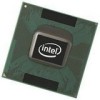Datasheet
3
Contents
1
Introduction
..............................................................................................................
7
1.1
Terminology
.......................................................................................................
8
1.2
References
.........................................................................................................
9
2
Low Power Features
................................................................................................
11
2.1
Clock Control and Low-Power States
....................................................................
11
2.1.1
Core Low-Power State Descriptions
...........................................................
13
2.1.1.1
Core C0 State
...........................................................................
13
2.1.1.2
Core C1/AutoHALT Powerdown State
...........................................
13
2.1.1.3
Core C1/MWAIT Powerdown State
...............................................
14
2.1.1.4
Core C2 State
...........................................................................
14
2.1.1.5
Core C3 State
...........................................................................
14
2.1.1.6
Core C4 State
...........................................................................
14
2.1.1.7
Core Deep Power Down Technology (Code Name C6) State
............
15
2.1.2
Package Low-power State Descriptions
......................................................
15
2.1.2.1
Normal State
............................................................................
15
2.1.2.2
Stop-Grant State
......................................................................
15
2.1.2.3
Stop-Grant Snoop State
.............................................................
16
2.1.2.4
Sleep State
..............................................................................
16
2.1.2.5
Deep Sleep State
......................................................................
16
2.1.2.6
Deeper Sleep State
...................................................................
17
2.2
Enhanced Intel SpeedStep® Technology
..............................................................
19
2.3
Extended Low-Power States
................................................................................
20
2.4
FSB Low Power Enhancements
............................................................................
21
2.4.1
Dynamic FSB Frequency Switching
...........................................................
21
2.4.2
Enhanced Intel® Dynamic Acceleration Technology
....................................
22
2.5
VID-x
..............................................................................................................
23
2.6
Processor Power Status Indicator (PSI-2) Signal
....................................................
23
3
Electrical Specifications
...........................................................................................
25
3.1
Power and Ground Pins
......................................................................................
25
3.2
Decoupling Guidelines
........................................................................................
25
3.2.1
VCC
Decoupling
......................................................................................
25
3.2.2
FSB AGTL+ Decoupling
...........................................................................
25
3.2.3
FSB Clock (BCLK[1:0]) and Processor Clocking
...........................................
25
3.3
Voltage Identification and Power Sequencing
........................................................
26
3.4
Catastrophic Thermal Protection
..........................................................................
29
3.5
Reserved and Unused Pins
..................................................................................
29
3.6
FSB Frequency Select Signals (BSEL[2:0])
............................................................
29
3.7
FSB Signal Groups
.............................................................................................
30
3.8
CMOS Signals
...................................................................................................
31
3.9
Maximum Ratings
..............................................................................................
31
3.10
Processor DC Specifications
................................................................................
32
4
Package Mechanical Specifications and Pin Information
..........................................
51
4.1
Package Mechanical Specifications
.......................................................................
51
4.2
Processor Pinout and Pin List
..............................................................................
59
4.3
Alphabetical Signals Reference
............................................................................
93
5
Thermal Specifications and Design Considerations
................................................
101
5.1
Monitoring Die Temperature
.............................................................................
108
5.1.1
Thermal Diode
.....................................................................................
108
5.1.2
Intel® Thermal Monitor
.........................................................................
109













